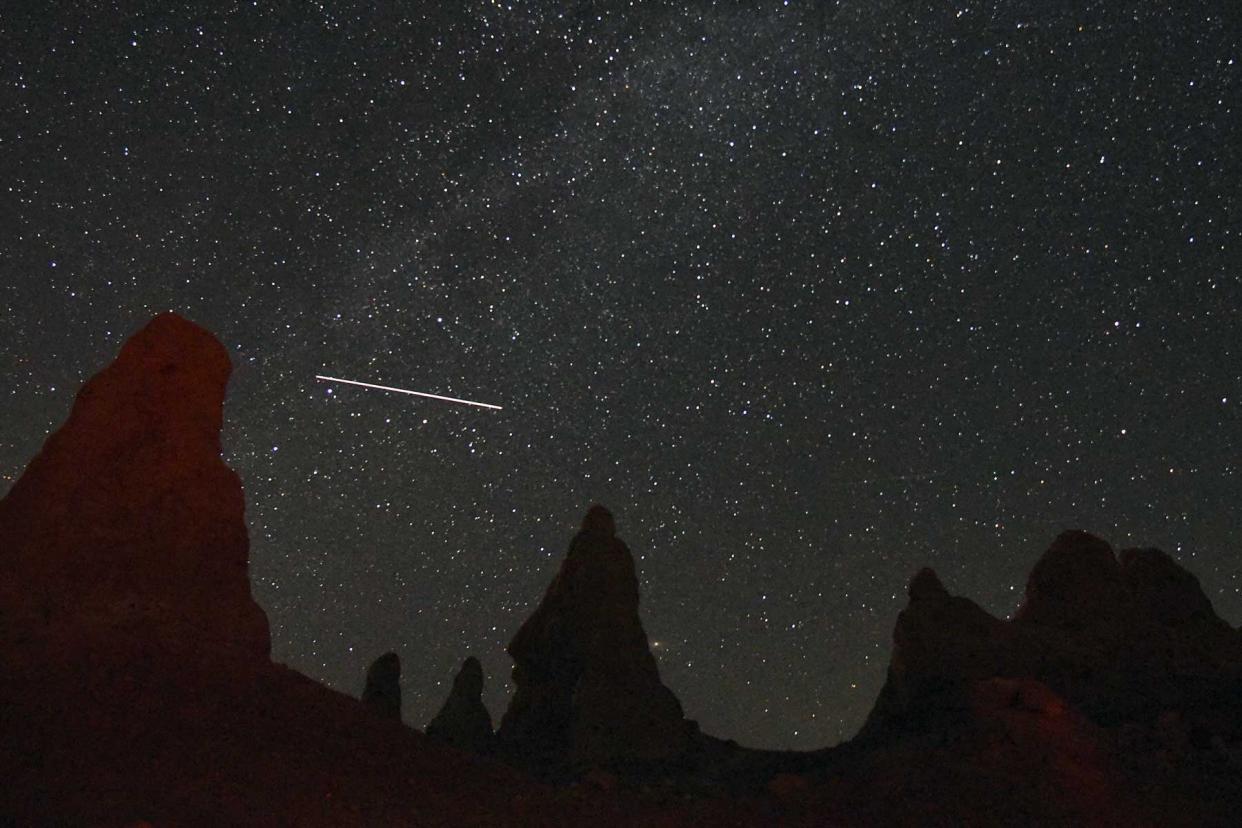The Perseid Meteor Shower Will Bring the Best Shooting Stars of the Year — Here's When to Look

It’s one of the most spectacular events in the stargazer’s calendar, but in 2020, seeing the Perseid meteor shower will require some careful timing. Though scheduled to peak from midnight through dawn from Aug. 11 to 13, the shower will be competing with pretty bright moonlight. Luckily, the Perseids are known to produce incredibly bright shooting stars, meaning you should still be able to catch sight of them despite the lunar distraction.
What is the Perseid meteor shower?
All shooting stars are caused by Earth colliding with streams of dust and debris shed by comets or asteroids. As those particles, called meteoroids, strike the atmosphere and burn up (thus turning into meteors), we see them as shooting stars. The year’s most prolific meteor shower, August’s Perseids, is caused by Comet 109P/Swift-Tuttle, which last swept through the solar system in 1992. It regularly produces about 60 colorful and bright shooting stars every hour on its peak nights, which fall between Aug. 11 and 13 this year, though the entire meteor shower runs roughly from July 17 through Aug. 24 each year.
Why is the moon a problem during the Perseid meteor shower in 2020?
The moon will hit its third-quarter phase on Aug. 11, meaning it’ll be half full and therefore very bright. As such, its brightness might drown out some of the Perseid meteors, especially on Aug. 11. It’s a vast improvement over last year’s scenario, though: The Full Sturgeon Moon occurred just a few days after the Perseids’ peak in 2019, meaning the moon was nearly twice as bright during the peak as it will be in 2020. Furthermore, this year, the moon will be waning, so it’ll get less bright as the nights continue, all the way through the new moon on Aug. 17.
When and where should you look for shooting stars during the Perseid meteor shower?
You’ll be able to see shooting stars any time during the meteor shower (from July 17 through Aug. 24), though there will be far fewer shooting stars per hour in the periods preceding and following the peak nights of Aug. 11, 12, and 13. Despite the bright moon, those peak nights are your best chance to see the most shooting stars, but we also suggest checking the skies between Aug. 13 and Aug. 17, as the moon will continue to dim over this period. And, as a bonus, the Perseids will occur in conjunction with the Delta Aquariids meteor shower, which runs from July 12 to Aug. 23.
For your best chance to view shooting stars, get outside after midnight, which is when your location is firmly on the night side of Earth, and look generally to the northeastern sky toward the constellation Perseus, where the shooting stars will appear to originate from (though they can appear anywhere). If you’re looking for the Delta Aquariids, look toward the constellation Aquarius. One more pro tip: Get as far away from light as possible. Cities and even smaller towns can create enough light pollution to take away from your viewing experience. If you’re lucky, you’ll catch sight of a meteor that skims the Earth's atmosphere and blazes through the night sky for a second or so.

Bob Riha/Getty Images
When is the next meteor shower?
The next reasonably big meteor shower is the Orionids, the result of debris leftover from Halley's Comet, which peaks from Oct. 20 to 21, though the most impressive meteor shower of the year will be the Geminids, which peaks on Dec. 13 to 14. The Geminid meteor shower reliably produces about 100 multicolored shooting stars per hour and can even max out at 150 per hour. They come not from a comet, but from an asteroid called 3200 Phaethon.
There’s nothing like catching a falling star, and it’s well worth making a trip to a dark sky site to experience a meteor shower. The more you look, the more you will see. However, catching the peak of the Perseids in 2020 will require patience and good timing. Either way, there are few better excuses to get outside and go stargazing, and few better months than August to do so. If it’s a clear night, expect to see quite a show.

